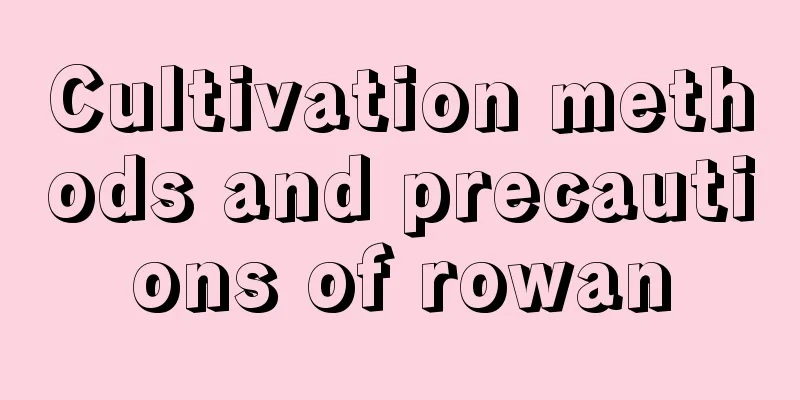The main role and function of trace element fertilizer (what are trace element fertilizers)

What is trace element fertilizer?Trace element fertilizer refers to fertilizer containing trace elements such as zinc, boron, molybdenum, manganese, iron, copper and other nutrients. These trace nutrients are essential for plant growth and development. They are called trace elements simply because crops require very small amounts of these elements. What are the functions of trace element fertilizers① Effects of trace elements Most trace elements in crops are components and activators of enzymes and coenzymes, and play an important role in promoting and regulating the synthesis of chlorophyll and protein, photosynthesis or metabolic processes, as well as the absorption and utilization of nutrients such as nitrogen, phosphorus and potassium . ②The role of zinc Zinc is involved in the synthesis and transformation of hormones and carbohydrates in plants, and is sometimes a component of multiple enzymes. Zinc fertilizer can increase crop seed yield and grain quality, change the seed-to-straw ratio, and enhance crop resistance. ③ Effect of Boron Fertilizer Boron is involved in the conversion and transport of carbohydrates in plants, regulating water absorption and nutrient balance as well as oxidation-reduction processes, and is required for flowering, fruiting and production point growth. When there is sufficient boron fertilizer, the crops will have deep roots and lush leaves, which can improve the energy supply to various organs of the crops and increase the fruit setting rate and fruit setting rate. ④ Effect of molybdenum fertilizer Molybdenum fertilizer is one of the indispensable trace elements for plants, and its physiological function is mainly in the metabolism of nitrogen. Molybdenum is a component of nitrogenase. Molybdenum must be involved for nitrogenase to have nitrogen-fixing activity. Molybdenum is essential for nitrogen fixation in root nodules that are symbiotic with leguminous crops, so leguminous crops are sensitive to the molybdenum price ratio. Molybdenum fertilizer is beneficial to the formation and transformation of sugars, can increase the content and stability of chlorophyll, can promote early maturity, and enhance disease resistance, cold resistance, and drought resistance. ⑤ Effect of manganese Manganese is an indispensable trace element for the normal growth of plants. It has many functions in plants and is related to the activity of many enzymes. Manganese exists in nucleic acid metabolic enzymes and promotes the synthesis of amino acids and proteins. Manganese can also regulate the oxidation-reduction reaction in crops, participate in the photosynthesis and nitrogen transformation of crops, increase the chlorophyll content, promote the circulation of carbohydrates, the accumulation of nutrients and the synthesis of vitamins. In addition , there are trace elements such as iron and copper, which play their respective roles in the growth process of crops. They are equally important as macroelements and are irreplaceable to each other . If crops do not grow well and do not produce high yields, we cannot simply attribute it to a lack of trace elements. We should make judgments based on many aspects such as the growth of crops and the condition of the soil. Crops need very little trace element fertilizer, and a slight lack or excess may cause serious damage to the crops. We should learn how to judge whether crops are lacking in trace elements: 1. Plant appearance diagnosisWhen identifying trace element deficiency, first look at the location where the symptoms appear. Except for zinc, general trace element deficiencies first show symptoms in new tissues; secondly, look at the size and shape of the leaves; thirdly, pay attention to the location of the leaves that are losing green. 2. Foliar spray diagnosisWhen the plant appearance diagnosis method cannot determine which trace element is lacking, root spraying can be used in conjunction with diagnosis. Prepare a solution containing a certain trace element of a certain concentration, spray or apply it on the diseased leaves, or soak the diseased leaves in the trace element solution for 1 to 2 hours. One week later, observe the changes in leaf color, growth, and appearance of the crops before and after fertilization. If the diseased leaves recover or the growth rate of new leaves is significantly accelerated, and the leaf color is normal, it can be confirmed that the crop disease is caused by a lack of a certain trace element. |
<<: Will succulents grow flower swords in winter (Why do succulents grow flower swords)
Recommend
What to do if the leaves of the fortune tree turn yellow
1. Adjust watering The yellowing of the leaves of...
What to do if Hawaiian coconut leaves turn yellow
1. Inappropriate fertilizer When cultivating it, ...
Disease and pest control of colorful pineapple
Heart rot and root rot If the base of the leaf tu...
How to prune a small pomegranate tree? When and how to prune it
Pomegranate tree pruning time Small pomegranate t...
Garlic vine cultivation methods and precautions
Garlic vine is an evergreen climbing plant that o...
What kind of soil is suitable for growing succulents?
Soil for succulent plants Most succulents grow in...
How to deal with the fragrant vine flowers after they fade
Treatment after the fragrant vine flowers fade Af...
How to grow Monstera
1. Maintenance conditions 1. Water: Monstera requ...
How to make the leaves of the green radish greener and more lush
1. Maintenance methods If you want the leaves of ...
How to care for the lucky charm plant after it blooms
1. Segregant strains The lifespan of the lucky pl...
How to grow chrysanthemums well?
The care of chrysanthemum is actually not complic...
The Flower Language and Legend of Flame Tree
Flame Tree Flower Language The flower language of...
How to make potted mint bloom
Keep enough light If you want mint to grow out of...
Tie 3 camellia trees together, the branches will be thick and strong, and they will bloom 100 flowers every year!
Three camellia seedlings tied together, growing i...
When is the best time to prune litchi trees?
Litchi tree pruning Litchi trees have always been...









